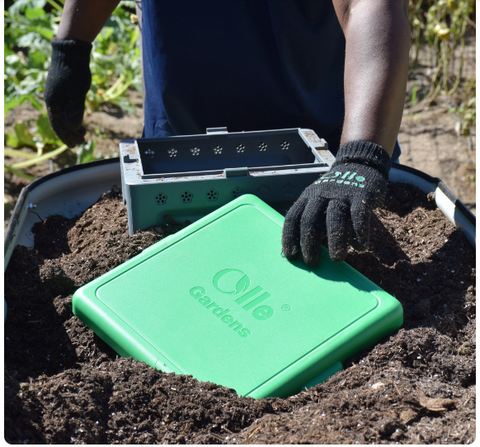The Ultimate Guide to Cleaning and Maintaining Your Worm Compost Bin
Worm composting, also known as vermicomposting, is an eco-friendly and efficient way to recycle kitchen waste into nutrient-rich compost for your plants. To ensure the success of your worm composting system, it's crucial to keep your worm bin clean and well-maintained. In this guide, we'll walk you through the steps to maintain a healthy environment for your worms and produce high-quality compost.
Understanding the Basics of Vermicomposting:
- Before diving into maintenance, let's briefly review the basics of vermicomposting. Worms, usually red wigglers or Eisenia fetida, break down organic matter into compost through their natural digestive processes. They thrive in a controlled environment with proper bedding, moisture, and a balanced diet of kitchen scraps.
Choosing the Right Bin:
- Selecting the right bin is the first step in successful worm composting. Make sure it has good ventilation, and drainage, and is appropriately sized for your household waste. Common materials for bins include plastic, wood, and even repurposed containers. Ensure that your chosen bin has a lid to maintain darkness, as worms prefer a dark environment.
Creating the Ideal Bedding:
- Worms need a comfortable bedding material to live and reproduce in. Shredded newspaper or cardboard is a popular choice. Keep the bedding moist but not waterlogged. Fluff it regularly to maintain a loose and aerated environment, which helps in the decomposition process.
Balancing the Diet:
- Worms have specific dietary preferences, and maintaining a balanced diet is crucial for their well-being. Provide a mix of kitchen scraps such as fruit and vegetable peels, coffee grounds, and crushed eggshells. Avoid adding meat, dairy, oily, or salty foods, as these can attract pests and create an unfavorable environment for the worms.
Monitoring Moisture Levels:
- Proper moisture levels are essential for worm health. The bedding should feel like a wrung-out sponge – damp but not dripping. Increase the amount of dry bedding material if it gets too damp conversely, if it's too dry, mist the bin with water. Regularly check the moisture level to prevent issues like anaerobic conditions and foul odors.
Harvesting and Adding Compost:
- Harvesting compost is a rewarding part of vermicomposting. When the bedding is rich and dark, it's time to collect the compost. Create a separation zone in the bin, and the worms will migrate to the fresh bedding, allowing you to easily harvest the finished compost. After harvesting, replenish the bin with fresh bedding and kitchen scraps.
Dealing with Pests and Issues:
- Keep an eye out for pests like fruit flies or mites. If you encounter an issue, address it promptly. Adding a layer of dry newspaper on top can deter flying insects while avoiding overfeeding helps prevent foul odors. Regularly turning the bedding and maintaining a balanced ecosystem within the bin can mitigate many potential problems.
Cleaning the Bin:
- Periodically cleaning your worm compost bin is essential. Empty the bin, remove any remaining compost, and scrub it with a mixture of water and a mild soap. Rinse thoroughly to remove soap residues. This practice prevents the buildup of harmful bacteria and ensures a clean and hospitable environment for your worms.
Conclusion:
Maintaining a worm compost bin is a simple yet vital process for successful vermicomposting. By following these steps and staying attentive to your worm bin's needs, you'll not only produce nutrient-rich compost for your garden but also create a sustainable and eco-friendly way to reduce kitchen waste. Happy composting!


